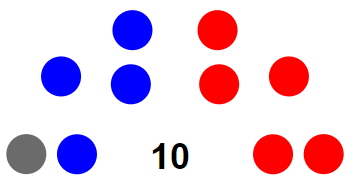Parliament of Dracul
This article or section contains out-of-date information or information about an entity that is currently undergoing major changes. |
Commonwealth of Dracul Parliament Dracul Parliament | |
|---|---|
| Federal | |
 | |
| Type | |
| Type | |
| Houses | Senate |
| History | |
| Founded | 1 November 2017 |
| Leadership | |
President of the Senate | |
President pro tem of Senate | |
| Structure | |
 | |
Political groups | Dracul Guardian Party |
Political groups | Dracul Dragon Party |
| Elections | |
| First-past-the-post | |
| Two-round system | |
Last election | 8 November 2021 |
Next election | 8 November 2025 |
| Meeting place | |
| Bran District, Commonwealth of Dracul | |
| Website | |
| https://draculgov.com/parliament | |
The Dracul Parliament is the unicameral legislature of the federal government of the Commonwealth of Dracul, and consists of the Senate. The Parliament meets in the Dracul Capitol in Bran District. Senators are chosen through direct election, though vacancies in the Senate may be filled by a gubernatorial appointment.
Congressional districts are apportioned to states by population using the Dracul Census results, provided that each state has at least one congressional representative. Each state, regardless of population or size, has two senators. Each senator is elected at-large in their state for a six-year term, with terms staggered, so every two years approximately one-third of the Senate is up for election.
Parliament History
Parliament was created by the Constitution of Dracul and first met in 2018, creating its first legislative function. Most members are non partisan, not belonging to any political party.
Legislation, Laws, and Acts
There are four types of legislation: bills, joint resolutions, concurrent resolutions, and simple resolutions.
Bills
The principal vehicle employed by lawmakers for introducing their proposals (enacting or repealing laws, for example). Bills are designated S. 1, HR. 2, and so on depending on the order in which they are introduced. They address either matters of general interest ("public bills") or narrow interest ("private bills").
Joint Resolution
Designated "S. J. Res." "H.J. Res." and numbered consecutively upon introduction, with one exception it requires the approval of both chambers and is submitted (just as a bill) to the president for possible signature into law. The one exception is that joint resolutions are used to propose constitutional amendments. These resolutions require a two-thirds affirmative vote in each house but are not submitted to the president; they become effective when ratified by three-quarters of the States.
Concurrent Resolution
Designated "S. Con. Res." "H. Con. Res." and numbered consecutively upon introduction is generally employed to address the sentiments of both chambers, to deal with issues or matters affecting both houses, or to create a temporary joint committee. Concurrent resolutions are not submitted to the president and thus do not have the force of law.
Simple Resolution
Designated "S. Res.," "H. Res" simple resolutions are used to express nonbinding positions of the House/Senate or to deal with the House/Senate's internal affairs, such as the creation of a special committee. They do not require action by the opposite chamber.